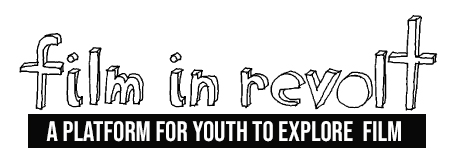After watching the 2020 release of Vivarium, Madison from Film in Revolt had the pleasure of speaking to the costume designer Catherine Marchand. It’s so interesting to understand more about the processes that are involved in bringing these characters to life.
—
I’m currently studying screenwriting at university, and so am interested in how you use the screenplay to construct a character, and what you look for when creating a ‘costume plot’ for a story?
For every project, we construct characters like this: first we identify which scenes are part of the same scenarios, so that we ensure continuity, and then we plan what we’ll need to cover all these different sequences. At the same time, according to the director, we research documentation, images and references that reflect the look of our characters.
Ideas come from the director, or me or its a joint effort. When we get a precise idea of what we want, I check with the budget to see how I can realise the wardrobe.
I construct a character by thinking of who this person would be, what kind of environment they have around them, what music they listen to, how they like to present themselves, what kind of movement they do. I present a psychological profile to the director, and for all elements I try to find references to represent this research.
Sometimes we start working with a graphic approach, sometimes it’s only a psychological approach, or it’s more in regard to actions, depending the intentions of our director.
When I have a profile that has been agreed upon by the director, I talk with all departments to see if it’s right for everybody. Sometimes the art department have a recommendation, or study, or special effect.
Continuously, I need to cross my work with the art department, make-up, DOP, director, stunt department and the special effects department.
For all films, I first reflect on who the character is, where do they live, what should they be able to do for movement, or sometimes, how the clothes may constrain the character’s movements.
I also try to reflect the psychology of the character. We have already all experienced this ourselves when we want to express something: a first date, a work interview… we pay attention to our presentation and we dress in the best way for what we want to express.
For me, this is finding ‘the quintessence of the character’ to be represented through their wardrobe, so that the public feels that what we have expressed is right. It is this accuracy that I try to approach, by observing similar situations or characters, and by creating a universe which corresponds to the character.
In regard to Vivarium, that story is so unnerving and dystopian! What was the design process like as you translated that story into clothing?
For Vivarium, Lorcan (director Lorcan Finnegan) had a precise idea for the rental employee, and the world of Vivarium: the reference was the Mormon community.
For principal characters Tom and Gemma, the idea was to represent generic, ‘good’, young people, who want to be parents. They are cool, easy going characters, and they start to build their life, to buy a house. Tom is a carpenter; Gemma is a teacher.
I suggested to use the Carhartt label for Tom for many reasons: it’s the biggest label used in a lot of countries around the world, a lot of different people appreciate the style, and it’s a label for workers like Tom. Finally, I found a contact in the USA with the label, and I proposed a partnership. They agreed to give clothes for Tom. It was a gift, because for this movie we didn’t have a big budget.
For Gemma, because her income is not rich, but comfortable, I decided to use cool clothes from labels like H&M, Uniqlo. I thought also to use pastel colours, and soft colours. It was also important to have different layers of clothing because they keep the same costume during the whole movie, and we needed to have different situations covered (night, work, office). We decided not to use jewellery, but for Gemma she has a belt with a nice detail, a ‘navajo’ buckle – her wardrobe was more personal.
For this film, it was a real work of colour. It was very important to match all colours, sets and clothes; the purpose was to stay graphic in this project. The idea was that a maximum number of people should identify with tenderness of our couple. I tried to imagine two people that many of us would know in our lives; a simple outfit suggesting middle class.
The second work consists finding a good coherence between the actor, the costume, and the story. It is very important that it is authentic – because just an actor in “disguise” is not credible.
And to finish up: are there a few films that you’ve worked on, which have stuck with you as notable experiences?
Every project is a personal investment, and in my personal history, a discovery of a universe that we did not know before. I have made many different films.
Ex Drummer (2007): My first film was a real creative adventure because of limited budget, and a first experience in the field.
A Quiet Passion (2016): An extraordinary adventure with an English team, at the highest level of standards, Terence Davies made me want to discover poetry.
Kursk (2018): A colossal costume challenge, with such complex technical constraints (shoot was 35 days in chlorinated pools with fitting costumes) 2300 costumes, minimal preparation and three countries.
When a new project has the chance to tackle an area that I don’t know, it’s just a wonderful gift.
Vivarium launched 16 April on Google Play, iTunes, Fetch and Umbrella Entertainment and will be available via Foxtel’s On Demand service from May 6.
